One of the best ways to save on your vegetable garden budget and grow better and more productive plants is to save the seeds from your best vegetable plants this year – and when it comes to saving seeds from your peppers – it couldn’t be easier!
It’s no secret that the price of seed packets and transplants keeps increasing each year. And when you have a large garden to plant, it can get quite expensive if you have to purchase all of your plants.
That is certainly the case for pepper plants. Not only can they be pricey to purchase in the early spring, it can also be hard to find the varieties you love most. And that is exactly where saving seeds from your favorite and best producing pepper plants can really come to the rescue!
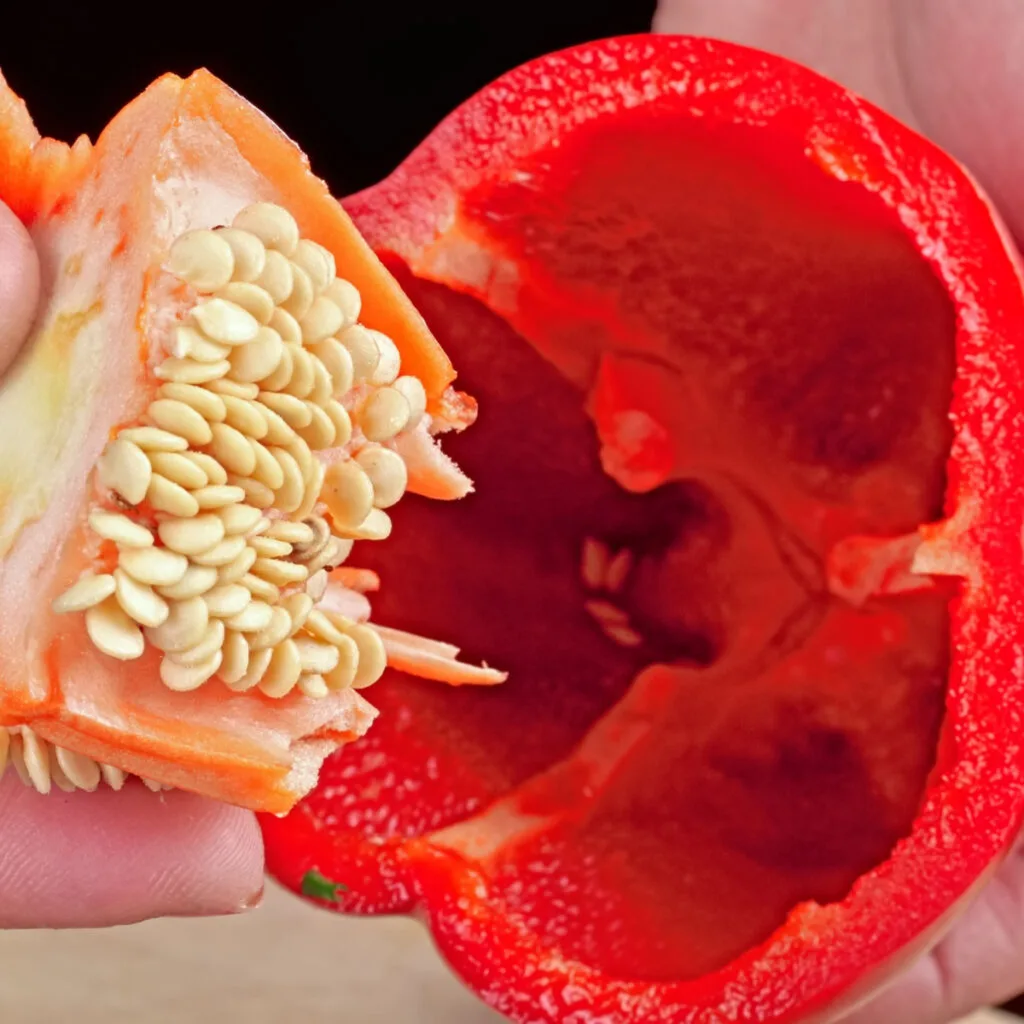
Whether it’s your favorite jalapeno pepper, a fiery cayenne or a tasty green, red or yellow bell pepper, saving seeds from the best peppers from your healthiest of plants will give you seeds that have all kinds of built-in advantages.
Strong, healthy plants produce good seed stock. And when the seeds are saved properly, not only will they have a better germination and growing rate, the plants that grow from them also have better genetics for growing to produce better and better fruit.
Saving seeds from peppers is actually one of the most simple gardening tasks of all. But success with saving your own seeds all starts with knowing which pepper varieties you can save seeds from – and which you can’t!
How To Save Seeds From Peppers – The Simple Steps To Success
Types Of Pepper Plants
Like tomato plants, peppers also come in either hybrid or open-pollinated varieties. To have success with saving pepper seeds, you can only save the seeds of open-pollinated types. (See “How To Save Tomato Seeds From Tomatoes”
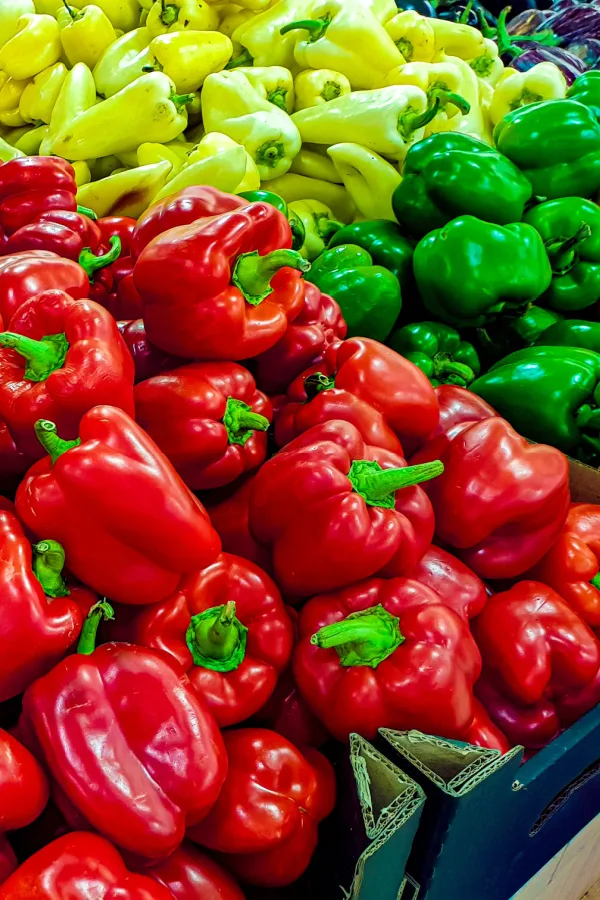
Hybrid varieties are created by combining two or more different varieties to create a brand-new pepper plant. The seeds of these plants will produce viable seeds. However, the seeds will not be an exact copy of the plant you grew.
Instead, the seeds will end up being a variation of one of the two plants used to create the plant. In some cases, it can even produce a new pepper plant – and one that may not even bear fruit. Saving seeds from a hybrid plant is basically like playing a guessing game with the end result usually being an undesirable pepper plant.
Open-pollinated varieties (heirloom plants) on the other hand are perfect for saving seeds. The seeds of these plants will create exact copies of the plant you get the pepper from and will produce the same peppers.
In addition to saving seeds from plant you grow, you can also save seeds from other gardeners plants or even organic farms that are growing open-pollinated plants in your area. But it’s best to avoid saving seeds from peppers from grocery stores.

Store peppers are often from hybrid plants that will not produce the same plant. In addition, even if they are open pollinated peppers, they have often been sprayed with chemicals that can affect germination and seed health.
Identifying The Plant Type – How To Save Seeds From Peppers
So how can you tell when a pepper plant is a hybrid or open-pollinated variety? The best way of knowing for sure is to look at the seed packet or the information on the transplant card.
If it doesn’t say specifically on the packet, you should see the letter “F” in front of a number that shows that it is a hybrid. For example, Merlot F1 is a hybrid pepper plant that was created to be super sweet and heavy-producing. Because it has the “F”, it means it’s a hybrid – and not good for saving its seeds.
However, any pepper plant that is listed as an “heirloom” is an example of an open-pollinated plant. Emerald Giant is a perfect example of a pepper plant that you can successfully save the seeds from to create an exact copy of the plant next year. (Affiliate Product Link: Emerald Giant Seeds )
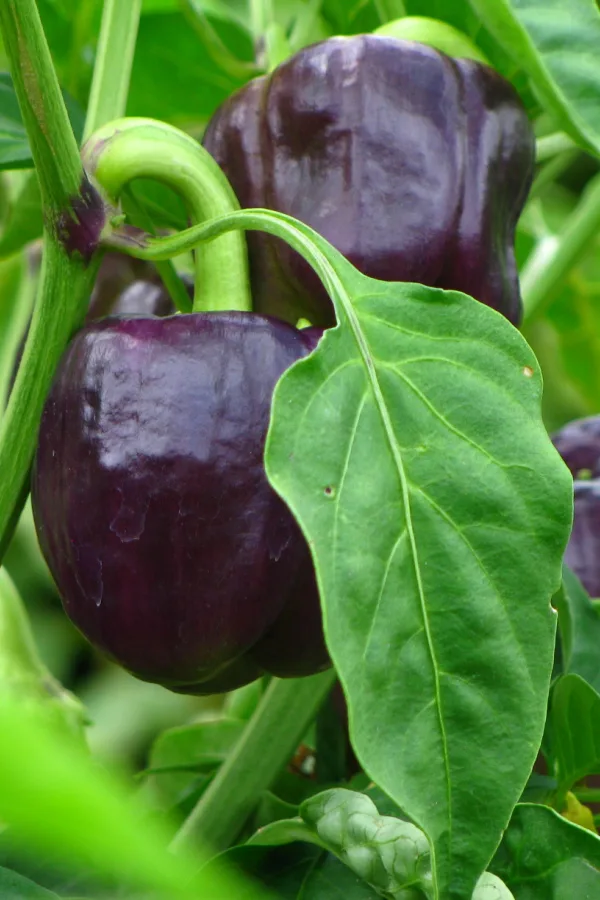
If you are still unsure but know the name of the pepper variety you are growing, a simple online search will give you the information you need on the type of plant it is. The good news is that there are hundreds upon hundreds of heirloom pepper varieties to save seeds from.
Choosing The Best Pepper – How To Save Seeds From Peppers
To save seeds, start by selecting the best peppers from your healthiest and most productive plant. Do not choose one from a diseased or struggling plant. Unfortunately, those genetics usually pass on and you can end up with another struggling plant.
Wait to harvest the seeds from your pepper until it is fully ripe. It is actually best to allow the fruit to soften slightly, indicating that the ripening process is over. The pepper might even start to wrinkle a little bit, and that is more than fine.
When saving pepper seeds – always let the pepper remain to fully ripen on the plant. This will allow the seeds to mature and develop to their full potential. Also, note which variety is which pepper if you are harvesting more than one variety. It sounds simple – but mixing the seeds up is quite easy without labeling!
Removing The Seeds
The next step is to remove the seeds. Start by washing and drying your pepper plant thoroughly before cutting. If you are using hot peppers, wear gloves to protect your hands – the heat will transfer easily!
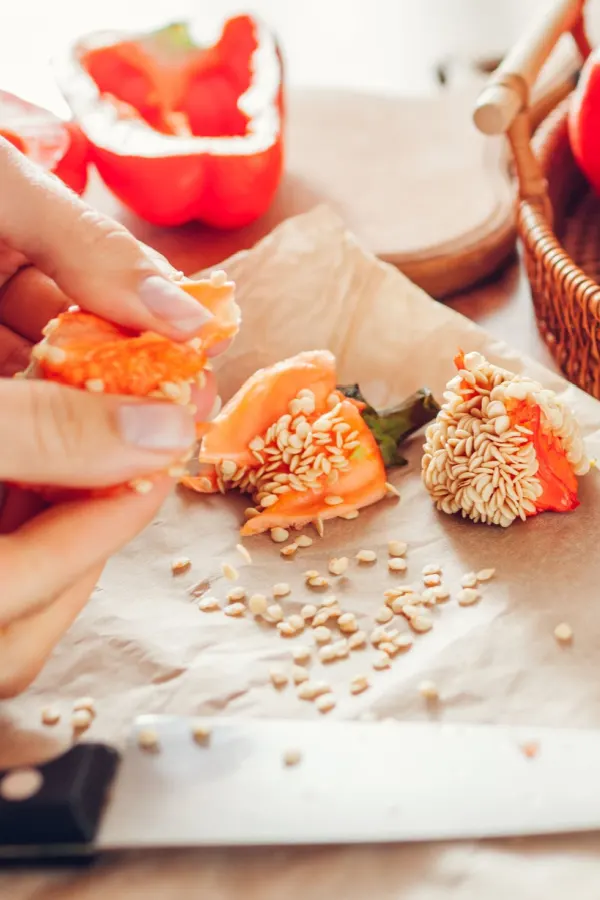
Remove the bottom portion of the pepper with a sharp knife. You can speed up the de-seeding process by gently rolling the pepper on a cutting board or between your hands to help dislodge the seeds. After most of the seeds are out, slice the pepper in half and remove any remaining seeds.
Place the seeds on a paper towel on a smooth, dry surface. Remove any discolored or damaged seeds and spread the remainder out in a single layer so they dry evenly and quickly. Place the seeds in a dry location that is out of direct sunlight.
The seeds can take up to a week to completely dry out. Tossing the seeds around carefully occasionally can help to ensure all sides of the seed dry evenly.
After a week, test one seed for dryness by breaking it in half. If it snaps easily, then the seeds are fully dry and ready for storage. If it bends, then the seeds need a little longer to dry. One thing is for sure – allowing the seeds to dry thoroughly before storing will help keep them strong!
Storing The Seeds – How To Save Seeds From Peppers
Once the seeds are 100% dry, it’s time to store them. Place the seeds in a paper envelope, plastic or glass container or an old seed packet. Label the seeds with the variety as well as the date you are saving them.
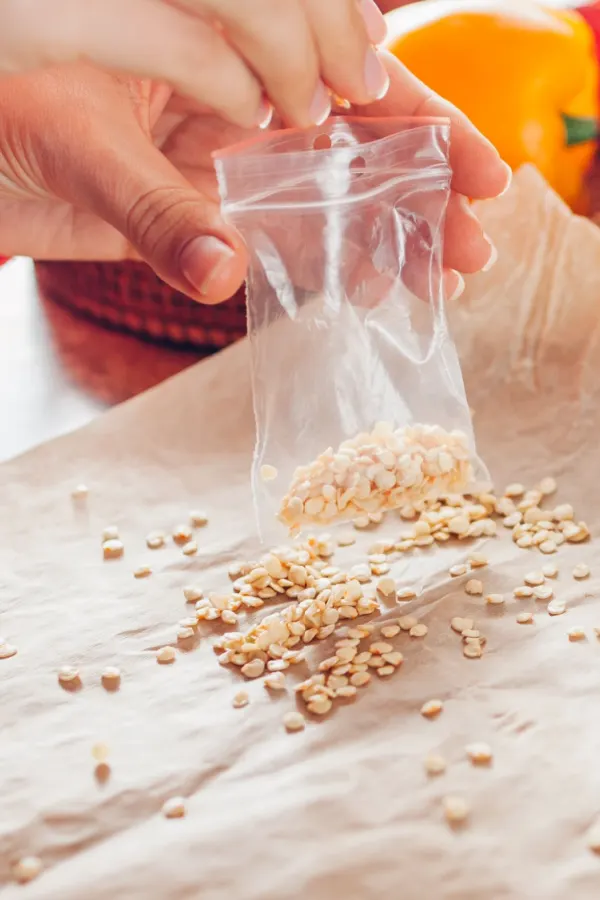
Place the seeds in a cool, dark location for long-term storage. A great location is in the back of a refrigerator or in a cool basement that is dry. Do not put the seeds in a freezer. Under ideal conditions, the seeds will stay viable for up to 3 years.
Even with that said, it is best to save new seeds every year to use the following year. The more fresh the seeds are, the better they will germinate and perform. By saving the seeds of your open-pollinated pepper plants now, you are not only saving money – but also ensuring you will have an amazing crop of healthy, productive pepper plants next year!
Follow Our Facebook Page For Great Gardening Tips And Advice! This Is My Garden Facebook Page
This Is My Garden is a garden website created by gardeners, for gardeners. Jim and Mary Competti have been writing gardening, DIY and recipe articles and books and speaking for over 15 years from their 46 acre Ohio farm. They publish three articles every week, 52 weeks a year. Sign up today to follow via email, or follow along!
